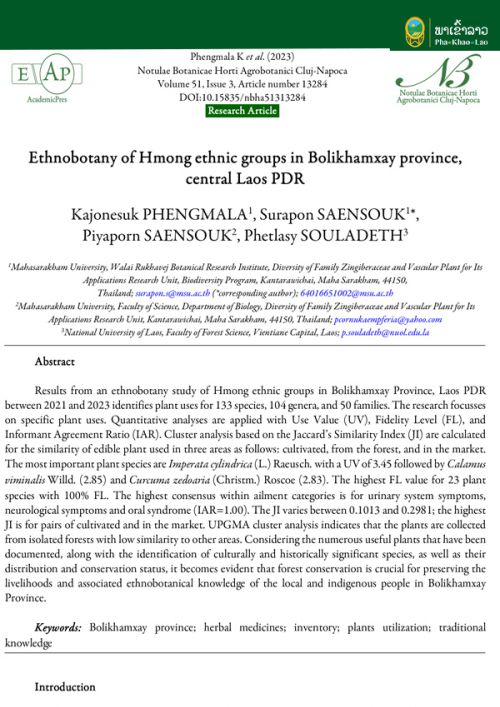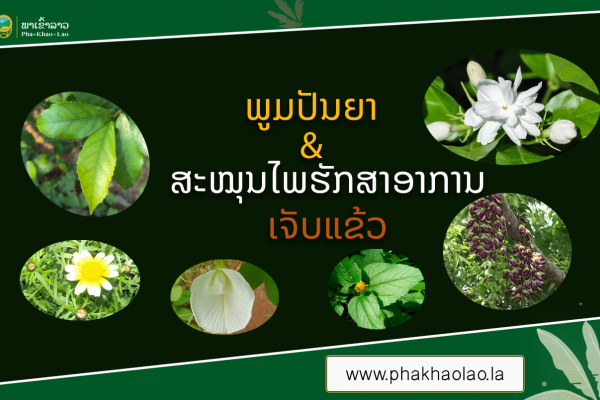
Results from an ethnobotany study of Hmong ethnic groups in Bolikhamxay Province, Laos PDR between 2021 and 2023 identifies plant uses for 133 species, 104 genera, and 50 families. The research focusses on specific plant uses. Quantitative analyses are applied with Use Value (UV), Fidelity Level (FL), and Informant Agreement Ratio (IAR). Cluster analysis based on the Jaccard’s Similarity Index (JI) are calculated for the similarity of edible plant used in three areas as follows: cultivated, from the forest, and in the market. The most important plant species are Imperata cylindrica (L.) Raeusch. with a UV of 3.45 followed by Calamus viminalis Willd. (2.85) and Curcuma zedoaria (Christm.) Roscoe (2.83). The highest FL value for 23 plant species with 100% FL. The highest consensus within ailment categories is for urinary system symptoms, neurological symptoms and oral syndrome (IAR=1.00). The JI varies between 0.1013 and 0.2981; the highest JI is for pairs of cultivated and in the market. UPGMA cluster analysis indicates that the plants are collected from isolated forests with low similarity to other areas. Considering the numerous useful plants that have been documented, along with the identification of culturally and historically significant species, as well as their distribution and conservation status, it becomes evident that forest conservation is crucial for preserving the livelihoods and associated ethnobotanical knowledge of the local and indigenous people in Bolikhamxay Province.

